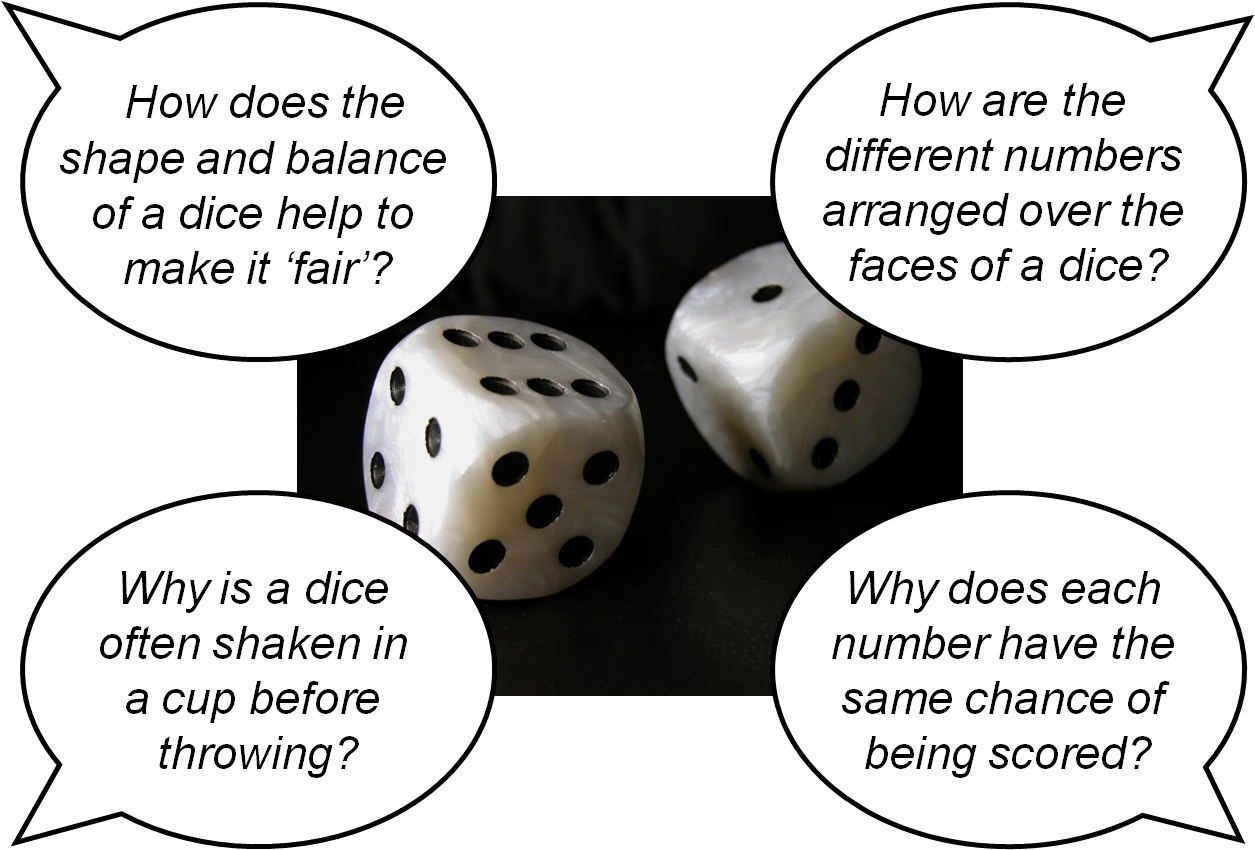Copyright © University of Cambridge. All rights reserved.
'What Do You Know about Probability? (1)' printed from https://nrich.maths.org/
Show menu
This activity was developed by the epiSTEMe project. More information about the project, and the other epiSTEMe activities available on NRICH, can be found here.
Share what you know about Dice
This activity aims to highlight the special properties of dice which make it possible to reason about their probabilities.
Activity

Start by asking the whole class for ideas about answering the question about 'shape and balance'. Rather than directly evaluating responses as right or wrong, ask students to explain why they think that and encourage exchange of views by students.
Bursts of pair discussion may be useful to generate ideas to feed into the whole-class discussion.
Leave the question on 'the same chance' until last. Prompt students to explain how their answers to this question relate to their answers to earlier ones.
Key Points
How does the shape and balance of a dice help to make it 'fair'?
This is intended to elicit ideas of symmetry and regularity. If students do use words such as 'symmetric' or 'regular' or 'balanced', ask them to explain what they mean. Ideally, ideas should flow from students themselves, but, if necessary, invite comparison between 'fair' dice and 'biased' or 'crooked' dice, and pose questions.
Why is a dice often shaken in a cup before throwing?
This is intended to elicit the idea that using a cup prevents handling of the dice by the thrower, making sure that the dice is shaken around and out at random.
How are the different numbers arranged over the faces of a dice?
This is intended to elicit the idea that each of the six faces of the dice shows one of the numbers 1 to 6. A further idea that students may volunteer is that the numbers on opposite faces add up to 7.
Why does each number have the same chance of being scored?
This is intended to elicit explanations drawing on the information provided in response to the preceding questions, and to focus attention on the key property of equally-likely outcomes.